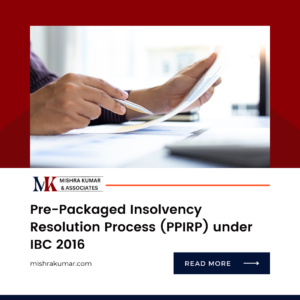Incorporation in India under the Companies Act 2013: A Comprehensive Guide
Incorporating a company in India under the Companies Act 2013 can be a complex process, but it offers numerous benefits, such as limited liability and easier access to funding. By understanding the different types of companies, meeting the minimum requirements, obtaining necessary digital signatures and identification numbers, and carefully drafting the MOA and AOA, you can navigate the process successfully.
1. INTRODUCTION
Incorporating a company in India can be a rewarding endeavor, given the country’s thriving business environment and growing economy. The Companies Act of 2013, which replaced the previous 1956 version, brought about significant changes in the way businesses are incorporated and managed in India. This guide will walk you through the key aspects of company incorporation as per the Companies Act 2013, providing valuable insights into the process and requirements.
2. ANALYSIS
2.1. Types of Companies
The Companies Act 2013 provides for various types of companies, including private companies, public companies, and one-person companies (OPCs). Understanding the distinctions between these types is crucial when deciding on the structure of your business.
2.2. Minimum Requirements
To start a company in India, there are certain minimum requirements that must be met. This includes having at least two directors for private companies, seven for public companies, and one for OPCs. Additionally, there must be a minimum of two shareholders for private companies and seven for public companies.
2.3. Digital Signature Certificates (DSC) and Director Identification Number (DIN)
Before initiating the incorporation process, directors must obtain a Digital Signature Certificate (DSC) and a Director Identification Number (DIN). These digital signatures and identification numbers are essential for filing documents electronically with the Registrar of Companies (RoC).
2.4. Name Reservation
Choosing a unique and suitable name for your company is a crucial step. The name must comply with the guidelines provided by the RoC, and an application for name reservation must be submitted.
2.5. Memorandum of Association (MOA) and Articles of Association (AOA)
Drafting the MOA and AOA is an integral part of the incorporation process. These documents outline the company’s objectives, powers, and rules for its operation.
CONCLUSION
Incorporating a company in India under the Companies Act 2013 can be a complex process, but it offers numerous benefits, such as limited liability and easier access to funding. By understanding the different types of companies, meeting the minimum requirements, obtaining necessary digital signatures and identification numbers, and carefully drafting the MOA and AOA, you can navigate the process successfully.
FAQs
Q1. What is the minimum capital requirement for incorporating a company in India under the Companies Act 2013?
A1. The Companies Act 2013 does not specify a minimum capital requirement for most types of companies. However, you should have sufficient capital to meet the company’s objectives and operational needs.
Q2. How long does it take to complete the company incorporation process in India?
A2. The timeline for incorporation can vary depending on several factors, but it typically takes around 15-20 days from the date of application submission.
Q3. Can foreign nationals or entities incorporate a company in India?
A3. Yes, foreign nationals and entities can incorporate a company in India, subject to certain restrictions and compliance with Foreign Direct Investment (FDI) regulations.
Q4. Are there any annual compliance requirements for companies incorporated under the Companies Act 2013?
A4. Yes, companies are required to comply with various annual filing and compliance requirements, including filing annual financial statements and annual returns with the RoC.
Q5. Can I change the name of my company after incorporation?
A5. Yes, you can change the name of your company after incorporation by following the prescribed procedures and obtaining approval from the RoC.
RECENT POSTS
- The implication of Stamp Duty on Scheme of Arrangement (Merger & Amalgamation):
- Pre-Packaged Insolvency Resolution Process (PPIRP) under IBC 2016
- BUY BACK OF SHARES V/S DIVIDEND
- Comprehensive comparative analysis of SEBI (Listing Obligations and Disclosure Requirements) (Second Amendment) Regulations, 2021.
- SEBI (Delisting of Equity Shares) Regulations, 2021-Imposes new responsibilities on the board of directors.

The implication of Stamp Duty on Scheme of Arrangement (Merger & Amalgamation):
The implication of Stamp Duty on Scheme of Arrangement (Merger & Amalgamation): The Scheme of Arrangement is a legal mechanism under corporate law that allows

Pre-Packaged Insolvency Resolution Process (PPIRP) under IBC 2016
Pre-Packaged Insolvency Resolution Process (PPIRP) under IBC 2016 The Insolvency and Bankruptcy Code (IBC) 2016, is a comprehensive legislation aimed at consolidating and amending laws

BUY BACK OF SHARES V/S DIVIDEND
BUY-BACK OF SHARES V/S DIVIDEND A dividend offers cash rewards to all shareholders in accordance with their stake in the company, whereas a share buyback

Comprehensive comparative analysis of SEBI (Listing Obligations and Disclosure Requirements) (Second Amendment) Regulations, 2021.
Comprehensive comparative analysis of SEBI (Listing Obligations and Disclosure Requirements) (Second Amendment) Regulations, 2021. Securities and Exchange Board of India (“SEBI”) vide notification dated May

SEBI (Delisting of Equity Shares) Regulations, 2021-Imposes new responsibilities on the board of directors.
SEBI (Delisting of Equity Shares) Regulations, 2021-Imposes new responsibilities on the board of directors. Securities and Exchange Board of India (“SEBI”) vide notification dated 10th

Summary of Insolvency and Bankruptcy Board of India (Liquidation Process) (Amendment) Regulations, 2024
Summary of Insolvency and Bankruptcy Board of India (Liquidation Process) (Amendment) Regulations, 2024 The Insolvency and Bankruptcy Board of India (IBBI) recently issued amendments to

